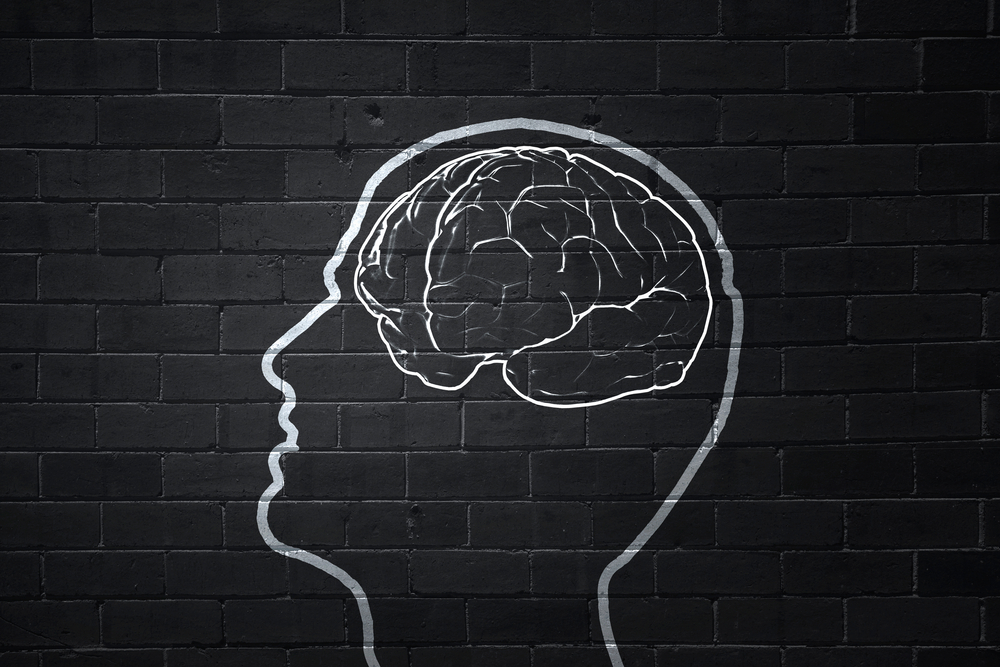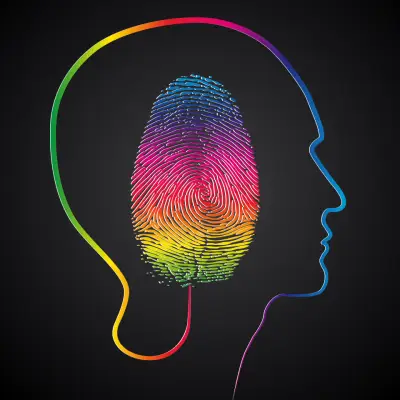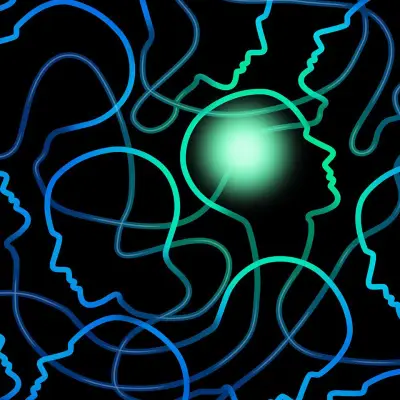Certain patterns of thinking and behaviour, particularly in the context of Borderline Personality Disorder (BPD), stand out for their intensity and impact on relationships. Two such patterns are 'black and white thinking' and 'splitting'. This post will explore these concepts in detail, shedding light on their characteristics and how they relate to BPD.
Jump to:
What is Black and White Thinking?

Black and white thinking, often referred to as dichotomous or all-or-nothing thinking, is a cognitive distortion where people perceive and categorise experiences, people, and thoughts in extremes. This perspective sees the world in a binary: things are either completely right or utterly wrong, with no acknowledgment of the vast spectrum that lies in between. This form of thinking simplifies the complexities of life into more manageable, albeit less accurate, categories.
Characteristics of Black and White Thinking
- Extremity: Viewing situations, people, or self-assessments as either perfect or disastrous.
- Simplification: Reducing complex scenarios to binary outcomes for easier processing.
- Rigidity: A lack of flexibility in thinking and the rejection of nuanced perspectives.
Examples of Black and White Thinking
- A student believes that not achieving the highest grade makes them a complete failure, overlooking their effort and the knowledge gained.
- Viewing a friend's disagreement as absolute disapproval instead of a momentary difference of opinion.
- Seeing yourself as entirely incompetent because of a single mistake at work, ignoring previous successes and learning opportunities.
- Dismissing a whole day as bad due to one unpleasant event without considering the positive moments.
- Believing that if a diet isn't followed perfectly, it's entirely ruined, discounting the benefits of moderation and balance.
This mindset can significantly impact emotional well-being and relationships. It fosters a negative self-narrative, where people may harshly judge themselves and others based on unrealistic standards of perfection or failure. This can lead to increased stress, anxiety, and a sense of dissatisfaction, as the richness and diversity of human experiences are overshadowed by an unforgiving, binary worldview.
Recognising and challenging black and white thinking patterns can lead to more balanced, compassionate, and nuanced perspectives, enhancing personal growth and interpersonal connections.
What is Splitting?

Splitting is a psychological phenomenon closely associated with Borderline Personality Disorder (BPD) but can also be observed in various other emotional conditions. It's a form of black and white thinking where people alternate between idealising and devaluing others or themselves, often in response to real or imagined slights or failures.
- Idealisation vs. Devaluation: People or situations are alternately seen as entirely perfect or completely flawed, with no middle ground.
- Impact on Relationships: This can cause significant instability in relationships, as the person with BPD might swing from adoring someone to finding them intolerable, often with little objective cause.
- Self-Image Issues: Splitting can also affect a person’s self-perception, leading to drastic shifts in self-esteem and identity.
What Does Splitting Look Like in BPD?
- Idealising a Partner: One moment, a person with BPD may see their partner as their soulmate, perfect in every way. This can include excessive praise, a desire for constant connection, and a deep fear of losing the relationship.
- Devaluing a Partner: Suddenly, the same partner might be seen as entirely unworthy, with every flaw magnified and every virtue forgotten. This shift can result from minor disagreements or perceived slights.
Triggers and Duration of BPD Splitting
Splitting can be triggered by stress, perceived rejection, or fear of abandonment. These episodes can vary in duration, sometimes lasting hours, days, or even longer. Recognising what triggers splitting is an important step towards managing it.
The Impact of Splitting and Black and White Thinking
The way we perceive the world and those around us can significantly influence our interactions, relationships, and overall well-being. Splitting and black and white thinking, particularly when they manifest in the context of Borderline Personality Disorder (BPD), are cognitive patterns that can deeply impact various aspects of life.
The Ripple Effect on Personal Relationships
When people engage in black and white thinking, they often view situations and relationships through a lens that lacks nuance. This perspective can drastically affect personal relationships, leading to a cycle of idealisation and devaluation. Partners, family members, and friends may feel they are walking on eggshells, never quite knowing which version of the person they will encounter. This unpredictability can foster an environment of tension and instability, where misunderstandings become common and conflicts escalate unnecessarily.
In relationships, black and white thinking transforms minor disagreements into insurmountable issues. A partner's small mistake or a friend's offhand comment can be interpreted as absolute betrayal, leaving no room for discussion or reconciliation. This can erode the foundation of trust and mutual respect that healthy relationships are built on, leading to a pattern of intense, short-lived connections that often end in pain and confusion.
Navigating the World with a Black and White Mindset
Beyond relationships, black and white thinking influences self-esteem and decision-making processes. Life's richness and the growth it offers often lie in its complexities and the ability to navigate shades of grey. However, seeing the world in stark contrasts robs people of the opportunity to learn from their experiences, leading to a stagnation of growth and understanding. Decisions become fraught with anxiety, as the fear of making the "wrong" choice can paralyse, given the perceived lack of middle ground.
This black and white mindset can make it challenging to appreciate the full spectrum of emotion and experience. The beauty of human relationships and the world around us often lies in their complexity, something that black and white thinking obscures.
Dealing with Splitting Behaviour
Understanding and addressing splitting behaviour requires a multifaceted approach. It begins with an environment of patience and empathy, recognising that these thought patterns are often deeply ingrained and not easily changed. Open communication can help demystify the fears and insecurities that underlie these behaviours.
Setting clear and consistent boundaries is also key to establishing a sense of safety and predictability. These boundaries can guide interactions and responses in moments of high emotional intensity, reducing the likelihood of misunderstandings and hurt.
Professional help, particularly therapies that focus on emotional regulation and interpersonal effectiveness, such as Dialectical Behaviour Therapy (DBT), can be invaluable. These therapeutic approaches offer strategies for recognising and adjusting black and white thinking patterns, promoting a more balanced and flexible approach to relationships and self-perception.
How to Stop Splitting and Black and White Thinking

Understanding how to navigate and diminish the intensity of splitting and black and white thinking, especially within the context of Borderline Personality Disorder (BPD), can lead to more stable relationships and a more balanced view of yourself and the world.
Strategies to Stop Splitting in BPD
To reduce splitting in BPD, developing self-awareness is key. Recognising the signs of an impending split and employing grounding techniques can help manage emotional responses. Engaging in therapies like Dialectical Behaviour Therapy (DBT) can also offer strategies for dealing with these intense shifts in perception, teaching skills to embrace the complexities of relationships and self-image without resorting to extremes.
Techniques to Overcome Black and White Thinking
Overcoming black and white thinking involves challenging your own thoughts and assumptions. It's about acknowledging the complexity of situations and understanding that people and circumstances are rarely entirely good or bad. Practising mindfulness and cognitive behavioural techniques can help you recognise and adjust this thought pattern, encouraging a more nuanced and forgiving perspective on life's many shades of grey.
Frequently Asked Questions About Splitting and Black and White Thinking in BPD
Can People Without BPD Experience Splitting or Black and White Thinking?
While splitting and black and white thinking are often associated with BPD, they are not exclusive to it. Anyone can experience these thought patterns during periods of high stress, emotional turmoil, or as a result of other mental health conditions. Recognising these patterns in oneself, regardless of a BPD diagnosis, is essential for personal growth and emotional health.
Is There a Biological Basis for Splitting and Black and White Thinking in BPD?
Research suggests that there may be neurological underpinnings to the emotional dysregulation seen in BPD, including splitting and black and white thinking. Differences in brain areas involved in emotion regulation, such as the amygdala and prefrontal cortex, have been observed. However, it's important to note that these findings are part of a complex interplay of genetic, biological, and environmental factors.
Can Splitting and Black and White Thinking Be Completely Eliminated?
While it may be challenging to completely eliminate splitting and black and white thinking, especially in the context of BPD, these thought patterns can be significantly managed and reduced through therapy, self-awareness, and coping strategies. The goal is not to eradicate these patterns entirely but to understand and mitigate their impact on one's life and relationships.
How Do Splitting and Black and White Thinking Affect Parenting or Caregiving?
When a parent or caregiver experiences splitting and black and white thinking, it can introduce instability and inconsistency into the family dynamic. Recognising and addressing these patterns is essential for providing a supportive, nurturing environment for children, who thrive on consistency and understanding. Professional guidance can help navigate parenting challenges while managing BPD symptoms.
Are There Any Self-Help Strategies That Can Complement Professional Therapy?
Alongside professional therapy, several self-help strategies can support people in managing splitting and black and white thinking:
- Mindfulness Meditation: Helps develop awareness of the present moment, fostering acceptance of complex emotions and thoughts without judgment.
- Journaling: Writing about your experiences and feelings can offer insights into patterns of thinking and behaviour, creating opportunities for reflection and growth.
- Education: Learning more about BPD and associated cognitive patterns can empower people to take active steps towards managing their symptoms.
Can Lifestyle Changes Play a Role in Managing BPD Symptoms Like Splitting?
Lifestyle changes such as regular physical activity, a nutritious diet, adequate sleep, and stress management techniques can positively impact overall mental health and potentially reduce the intensity of BPD symptoms. A holistic approach to well-being, combining lifestyle changes with therapy and support, can offer a comprehensive strategy for managing BPD.
How Can Loved Ones Support Someone with BPD Who Exhibits Splitting and Black and White Thinking?
Supporting a loved one with BPD requires patience, understanding, and clear communication. Important steps include encouraging them to seek professional help, offering emotional support without judgment, and maintaining healthy boundaries. Educating yourself about BPD can also provide valuable insights into the loved one's experiences, fostering empathy and a more supportive relationship.
Recommended for you!
Best SellersEmbrace Healing: Borderline Personality Awareness with Centre of Excellence
Begin your journey to understanding Borderline Personality Disorder (BPD) with our comprehensive Borderline Personality Awareness Diploma Course, crafted to shed light on the symptoms of BPD including the challenges of black and white thinking and splitting.
Why Centre of Excellence?
- Inclusivity: Transformative education should be universally accessible, hence our commitment to affordability.
- Learn on Your Terms: Our courses are designed for maximum flexibility, allowing you to seamlessly blend learning into your life, regardless of your schedule.
- A Spectrum of Insights: Learn about BPD with a curriculum that spans a wide range of topics, from understanding splitting to managing emotional volatility, tailored to meet a variety of learning needs and interests.
- Unparalleled Support: Enrolment comes with the bonus of personalised tutor support and the opportunity to connect with a vibrant learner community, providing a solid foundation of encouragement and guidance.
Special Offer
We are excited to present our Borderline Personality Awareness Diploma Course for just £29, saving you over £100!












